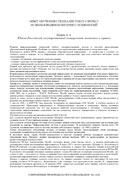PDF-версия статьи


|
1.Brainstorming: It is a technique which involves generating a list of ideas in a creative, unstructured manner. The goal of brainstorming is to generate as many ideas as possible in a short period of time. The key tool in brainstorming is "piggybacking," or using one idea to stimulate other ideas.
2.Keeping a journal: Journals are an effective way to record ideas that one thinks of spontaneously. By carrying a journal, students can create a collection of thoughts on various subjects and use them later when developing and organizing materials in the prewriting stage. It is an exciting tool used in enhancing students essay writing skills.
3.Free writing: This technique implies choosing a particular idea and writing non-stop about it for a short period of time. This can help generate a variety of thoughts about a topic in a short period of time, which can later be restructured or organized following some pattern of arrangement.Free writing can also be used – asking someone to just write anything that comes to mind about the subject, but in a more structured approach, almost like a stream of consciousness.
4.Mind mapping. Mind mapping is another highly effective tool that though is quite similar to brainstorming; it divides the ideas in sets of relations regarding the main subject.
5. Brain writing. In this technique students don’t have to speak to each other, at least initially. Ideas are written down and shared later. This encourages all voices to be heard and prevents people from forgetting their ideas as they wait for an opportunity to speak. Building on ideas occurs after ideas are shared.
We all know that original, creative ideas come from combining existing concepts in a new way. With divergent thinking, we produce the pool of ideas. Arranging them in an innovative way is the next step that, even though it requires some analytical thinking, also needs creativity to achieve the best result. As John Cleese once said when you are being creative, nothing is wrong.
Literature
1 From Wikipedia, the free encyclopedia
2Author Unknown.Strategies of Divergent Thinking.University of Washington. Retrieved August 6, 2009
ОПУБЛИКОВАНО
Tulegenova B.A.,Togusbayeva M.S., Abdykarimova C.A., Kalikulova M.O. Features of divergent thinking in ELT. // Современные проблемы науки и образования - 2015.-№6. (приложение "Педагогические науки"). - C. 8